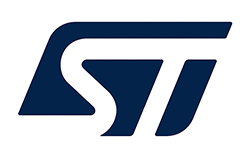STMicroelectronics MCU Evaluation Board STM32F779I-EVAL
- RS Stock No.:
- 123-1059
- Mfr. Part No.:
- STM32F779I-EVAL
- Brand:
- STMicroelectronics

Currently unavailable
We don’t know if this item will be back in stock, it is being discontinued by the manufacturer.
- RS Stock No.:
- 123-1059
- Mfr. Part No.:
- STM32F779I-EVAL
- Brand:
- STMicroelectronics
Specifications
Technical Reference
Legislation and Compliance
Product Details
Find similar products by selecting one or more attributes.
Select all | Attribute | Value |
|---|---|---|
| Brand | STMicroelectronics | |
| Classification | Evaluation Board | |
| Technology | MCU | |
| Device Core | ARM Cortex M7 | |
| Processor Family Name | STM | |
| Processor Part Number | STM32F779NI | |
| Processor Type | MCU | |
Select all | ||
|---|---|---|
Brand STMicroelectronics | ||
Classification Evaluation Board | ||
Technology MCU | ||
Device Core ARM Cortex M7 | ||
Processor Family Name STM | ||
Processor Part Number STM32F779NI | ||
Processor Type MCU | ||
Evaluation Board with STM32F779NI Microcontroller
The STM32 evaluation boards have been designed as a complete demonstration and development platform for the series of ARM Cortex STM32 MCUs. The STM32F779I -EVAL includes high-speed embedded memories, and an extensive range of interfaces to evaluate all the peripherals and to help developing applications. A daughterboard can also be connected for specific applications. The integrated ST-LINK/V2-1 provides an embedded in-circuit debugger and programmer for the STM32. This evaluation board can be used as a reference design for user application development but it is not considered as a final application.
Features
2 MB of Flash memory, 512 KB of SRAM, 16 KB instruction TCM RAM (for critical real-time routines) and 4 KB backup SRAM
4 in (101.6 mm) 800 x 480 capacitive touch LCD display with MIPI DSI connector
4-color user LEDs
Joystick with 4-direction control and selector
Camera module
Flexible external memory controller: 8M x 32-bit SDRAM, 1M x 16-bit SRAM and 8M x 16-bit NOR Flash
Serial Audio Interface (SAI) audio codec
Stereo digital microphone
Stereo speaker outputs
Four I2 C interfaces
Real-time clock with backup battery
“Reset”, “Wake Up/Tamper” or key button
512-Mbit Quad-SPI NOR Flash
2 GB (or more) SDIO interface micro-SD card
2Gx16-bit NAND Flash interface to connect NAND Flash module
USB OTG HS and FS with Micro-AB connectors
IEEE-802.3-2002 compliant Ethernet connector
Six 5 V power supply options: power jack, ST-LINK/V2-1 Micro-B USB connector, User USB HS connector, User USB FS1 connector, User USB FS2 connector, daughterboard
CAN2.0 A/B compliant connection
RS-232 DB9 communication
JTAG/SWD and ETM trace debug support, ST-LINK/V2-1 embedded
Extension and memory connectors for daughterboard or wrapping board
Potentiometer and motor control connector
Cryptographic acceleration
4 in (101.6 mm) 800 x 480 capacitive touch LCD display with MIPI DSI connector
4-color user LEDs
Joystick with 4-direction control and selector
Camera module
Flexible external memory controller: 8M x 32-bit SDRAM, 1M x 16-bit SRAM and 8M x 16-bit NOR Flash
Serial Audio Interface (SAI) audio codec
Stereo digital microphone
Stereo speaker outputs
Four I2 C interfaces
Real-time clock with backup battery
“Reset”, “Wake Up/Tamper” or key button
512-Mbit Quad-SPI NOR Flash
2 GB (or more) SDIO interface micro-SD card
2Gx16-bit NAND Flash interface to connect NAND Flash module
USB OTG HS and FS with Micro-AB connectors
IEEE-802.3-2002 compliant Ethernet connector
Six 5 V power supply options: power jack, ST-LINK/V2-1 Micro-B USB connector, User USB HS connector, User USB FS1 connector, User USB FS2 connector, daughterboard
CAN2.0 A/B compliant connection
RS-232 DB9 communication
JTAG/SWD and ETM trace debug support, ST-LINK/V2-1 embedded
Extension and memory connectors for daughterboard or wrapping board
Potentiometer and motor control connector
Cryptographic acceleration
The STM32F7 microcontrollers feature ST’s ART Accelerator™ as well as an L1 cache and deliver the maximum theoretical performance of the ARM Cortex-M7 core, regardless if code is executed from embedded Flash or external memory. Typical performance figures: 1082 CoreMark / 462 DMIPS at 216MHz clock frequency.
AXI and multi-AHB bus matrixes for interconnecting core, peripherals and memories
Double-Precision Floating-Point maths unit on some variants
Up to 16KB +16KB of I-cache and D-cache
Up to 2MB of embedded Flash memory, with Read-While-Write capability on certain devices
Up to 512KB of data memory, including up to 128KB of Tightly-Coupled Memory for Data (DTCM) for Stacks, Heaps
16KB of Tightly-Coupled Memory for Instructions (ITCM) for time-critical routines
4KB of backup SRAM to keep data in the lowest power modes
Peripheral speed is independent from CPU speed (dual clock support)
Protected code execution feature (PC-ROP) on some variants
Power Efficiency: 7 CoreMark/mW at +1.8Vdc
Double-Precision Floating-Point maths unit on some variants
Up to 16KB +16KB of I-cache and D-cache
Up to 2MB of embedded Flash memory, with Read-While-Write capability on certain devices
Up to 512KB of data memory, including up to 128KB of Tightly-Coupled Memory for Data (DTCM) for Stacks, Heaps
16KB of Tightly-Coupled Memory for Instructions (ITCM) for time-critical routines
4KB of backup SRAM to keep data in the lowest power modes
Peripheral speed is independent from CPU speed (dual clock support)
Protected code execution feature (PC-ROP) on some variants
Power Efficiency: 7 CoreMark/mW at +1.8Vdc
